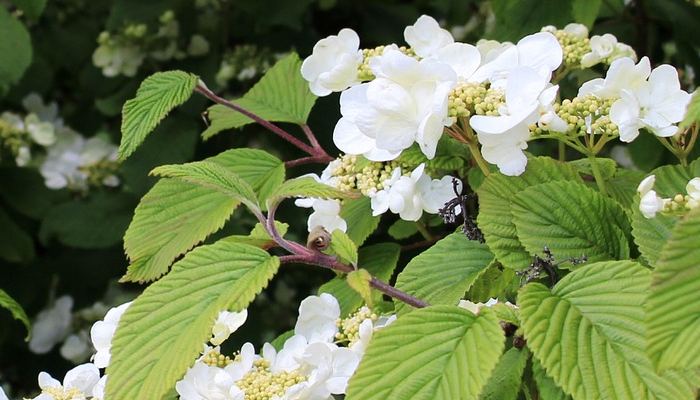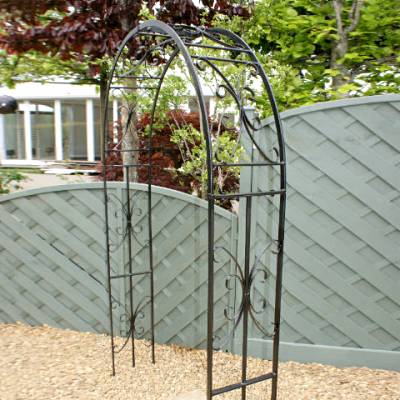
REVIEWED: April 2025NEWS
Climbing Plants for Garden Arches
We are all aware of the benefits of a garden arch, whether acting as a grand entrance to your garden or adding a focal point to an empty space. The related arbour, effectively an arch with a seat can further create a pleasant space to relax or shelter.
There is nothing wrong with a bare, unadorned arch, but of course an arch or arbour can host a variety of climbing plants that will absolutely thrive over the structure.
These climbers will not only afford not only a fantastic display of colour but also release wonderful fragrances that you can soak up as you pass by.
Did you know: Many climbers are more scented in the evening.
Climbing plants: things to look out for:
- Some climbers such as Wisteria can become quite heavy over time, so ensure your structure is strong enough to support your chosen climber
- The soil type and amount of sun in your arch's location will determine which climbers will be suitable
- To keep things looking good all year round, you should regularly prune your plants, removing dead flower heads and to ensure the plants don't get out of control
There is a wide range of plants that are suitable for growing over archways; here are some popular choices that you might want to consider, plus one or two wildcards if you are feeling more adventurous!
Clematis

Popular and easy to grow with beautiful bell flowers that come in almost every colour. Most varieties will generally flower early to late summer, some require full sun, others prefer shade. Pliable stems make it easy for the plant to wrap itself around the arch as it grows. Our Pick: Jackmanii
Wisteria

A vigorous climber known for its beautiful cascades of perfumed, pastel-coloured flowers, offset by its heavy woody vines so you'll need a strong structure to host it. They love, and need, the sun and mostly flower during May and June. Our Pick: Yae-kokuryu
Arches for Climbers
A classically styled arch that is very affordable and suitable for lightweight climbing plants.
Ideal for alleyways and side walls, this solid steel arch is available in a range of widths.
This chunky timber arch is strong enough for some weighty climbers, with helpful trellis side panels.
Another solid wooden structure with a highly Japanese style top section. Available in 3 or 4ft widths.
Made here in the UK from solid steel, this arch is available as a traditional arch or a wall arch.
A traditional Gothic Ogee arch made in the UK from heavyweight steel.
Climbing Rose

They don't come more classic than the rose, probably the most romantic of all the climbing plants. Requiring full sun and fully hardy, climbing roses will reward with plentiful rosette shaped flowers and a heavy scent during June to August (after which is the best time to prune). Our Pick: Paul's Himalayan Musk
Climbing Hydrangea

Ideal for shady, inhospitable areas of the garden, this variety is slow to establish but will eventually produce plenty of dainty white flowers in late spring and early summer, while the dark green leaves will turn yellow in autumn. Our Pick: Anomala subsp. petiolaris
Star Jasmine

An evergreen climber with dark green leaves it produces an abundance of intensely sweet-scented white flowers from mid to late summer. It does prefer sunny locations as it is quite susceptible to severe frosts.
Sweet Pea

Another classic choice with many pastel shades available, especially for those who prefer stronger scents. Requires full sun, they flower June to September. Sweet Peas are also great for cutting so you can enjoy the aroma inside your home. Our Pick: Pink Panther
Ivy

While some Ivy can be dark and gloomy, there are many other varieties, in golden and lime green tones that can really brighten up a space. Most varieties flower during the late autumn. It is very hardy and there are very few places it will not grow but it does like full sun or partial shade. Our Pick: Goldchild
Honeysuckle

A hardy and generally fast growing and sweetly scented favourite that will also attract plenty of wildlife to it's nectar rich flowers. Colours range from whites, yellows and pinks. Likes sun or part shade. Most varieties flower through the summer months. Our Pick: Serotina
Kiwi Fruit

A surprise to many I'm sure, this exotic option can be grown here in the UK if you are careful. It offers pretty and fragrant flowers in addition to the possibility of the famous hairy-skinned fruit within 3 or 4 years. It likes sunny, sheltered spots and early shoots are susceptible to frost. It can bear the fruit but will need regular pruning & training as it is a vigorous grower. Our Pick: Jenny
















